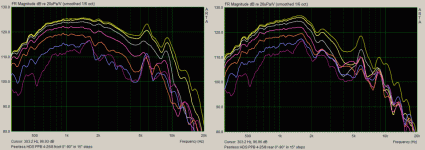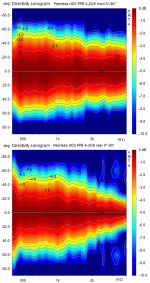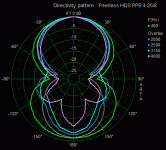Continuing the saga... the S16 which utilise waveguides provides great directivity, but the problem being lack of uniform rear radiation. I have decided that it is not a good compromise. There is something missing.
So here I want real dipole radiation front and back, and uniform to very high frequencies. This can only be done with extemely short front-to-back distance.
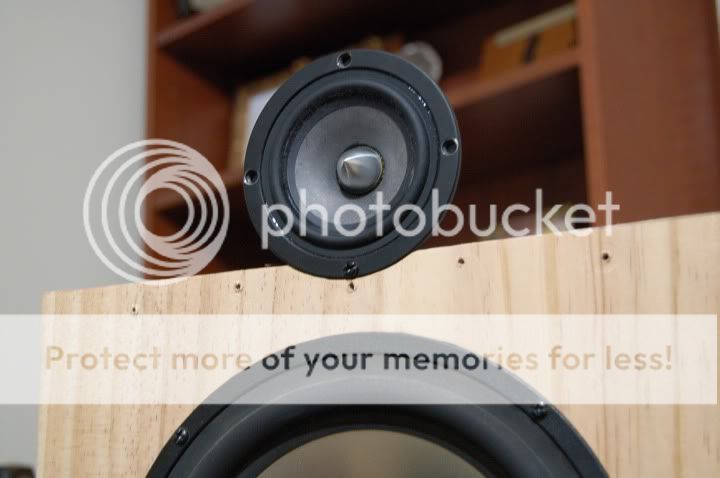
The "tweeter" used is TB 3". It allows low crossover frequency.
The directivity plot was measured indoor so there is room for improvement when I take it for outside measurement later.
indoor, 1m, normalised
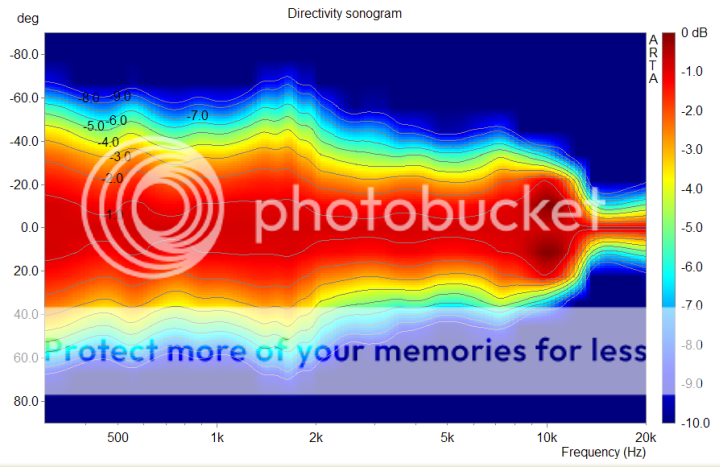
same graph, contour format
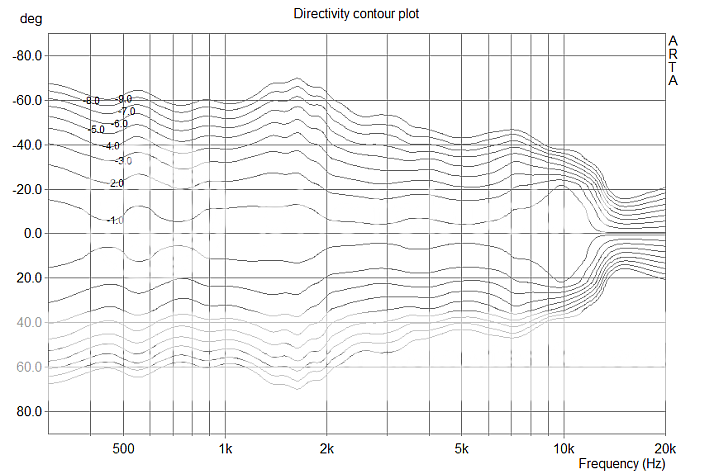
I think this is very acceptable. Minor widening of directivity at 1.8khz, but smooth out.
To put things in perspective, a sample of typical back to back dome implementation:
My own s9, outdoor, 1.9m, back to back dome, normalised

Obviously the fullrange do not have a resolution like 1" dome can give. Currently this is not bothersome but we'll see over time.
So here I want real dipole radiation front and back, and uniform to very high frequencies. This can only be done with extemely short front-to-back distance.

The "tweeter" used is TB 3". It allows low crossover frequency.
The directivity plot was measured indoor so there is room for improvement when I take it for outside measurement later.
indoor, 1m, normalised

same graph, contour format

I think this is very acceptable. Minor widening of directivity at 1.8khz, but smooth out.
To put things in perspective, a sample of typical back to back dome implementation:
My own s9, outdoor, 1.9m, back to back dome, normalised

Obviously the fullrange do not have a resolution like 1" dome can give. Currently this is not bothersome but we'll see over time.
Hi OP,
The rear chamber of the TB is actually very open due to small Neo magnet. I did not measure it this time, but in the past I did that and measures well:
http://www.diyaudio.com/forums/mult...polar-response-tweeters-last.html#post2092527
The XO is 1khz, LR4 electrical (it produces 1.1khz LR4 acoustics due to rolloff of the Seas L21)
The next experiment is to lower the xo even more gradually, perhaps 900, 800 etc.
The rear chamber of the TB is actually very open due to small Neo magnet. I did not measure it this time, but in the past I did that and measures well:
http://www.diyaudio.com/forums/mult...polar-response-tweeters-last.html#post2092527
The XO is 1khz, LR4 electrical (it produces 1.1khz LR4 acoustics due to rolloff of the Seas L21)
The next experiment is to lower the xo even more gradually, perhaps 900, 800 etc.
A little more EQ, and it would be perfect. Looks like it could use a super tweeter though...
Ditto, what is you're XO frequency? And what size driver are you crossing it to?
The widening at 1.8khz really cannot be EQ'd because it is physical. I'm actually a bit puzzled why that is the case because it should be well in the dipole range. It could be due to the interaction with that minimal baffle.
The midrange is 8", and crossed at 1khz at the moment.
Anyway, I'm going to listen to a pair of ORIONS tomorrow. Very excited !!
Last edited:
Nice! Always good to hear. I think you will be pleasantly surprised by your own work.
The widening polar pattern is a little unpredictable, but so are small dipole drivers. What I would do is EQ it for something closer to a constant power response, rather than prioritizing the on-axis response. I would put a shallow 1 or 2dB dip between 1.1kHz and 2kHz, just to smooth things out a little. Give it a listen, I bet it will be subtle but nice.
The widening polar pattern is a little unpredictable, but so are small dipole drivers. What I would do is EQ it for something closer to a constant power response, rather than prioritizing the on-axis response. I would put a shallow 1 or 2dB dip between 1.1kHz and 2kHz, just to smooth things out a little. Give it a listen, I bet it will be subtle but nice.
I listened to a pair of Orions last night. This is a very rare chance in Australia. In fact the owner is an American who brought them over.
I love them and love how they look. So correct and appealing.
Surprisingly the bass was not their best performer. It's the midrange, so natural.
As someone said before "Why do we bother ...."
I love them and love how they look. So correct and appealing.
Surprisingly the bass was not their best performer. It's the midrange, so natural.
As someone said before "Why do we bother ...."
Any comparisons you would like to make to your own work? An 8" crossed high to a tweeter on a relatively wide baffle goes against some of your recent design philosophy after all, or are we splitting hairs here?
I am experimenting with the baffleless route myself so would be interested to hear examples of its value.
I am experimenting with the baffleless route myself so would be interested to hear examples of its value.
Generally I don't like to comment on "products" but like to discuss approach and topologies. But I'll make an exception on this one 
Tweeters
Due to recent experiments with high frequency directivity I paid great attention. Yet there's nothing wrong with Orion's tweeters. They are smooth and coherent to the midrange. They sounded dull at times but I'm 100% sure this is the effect of DSS filter. Perhaps 3.2db is too much, but this is a matter of taste and preference.
Midrange
Nothing wrong. Very natural and clear. No hints of that 5khz metal cone breakup. Reproduced great dynamics on certain material. Pure awesomeness.
Bass
I was expecting much better from Dipole bass and expensive woofers. Did not go low enough, and might be related to the room (floating floor, speaker locations, etc.).
Looks/construction
Simply amazing to look at. Very balanced. Truly beautiful.
Tweeters
Due to recent experiments with high frequency directivity I paid great attention. Yet there's nothing wrong with Orion's tweeters. They are smooth and coherent to the midrange. They sounded dull at times but I'm 100% sure this is the effect of DSS filter. Perhaps 3.2db is too much, but this is a matter of taste and preference.
Midrange
Nothing wrong. Very natural and clear. No hints of that 5khz metal cone breakup. Reproduced great dynamics on certain material. Pure awesomeness.
Bass
I was expecting much better from Dipole bass and expensive woofers. Did not go low enough, and might be related to the room (floating floor, speaker locations, etc.).
Looks/construction
Simply amazing to look at. Very balanced. Truly beautiful.
Which Orions did you hear? The latest model with rear tweeters?
P.S. I have not been able to get on to the Linkwitz pages with my Mac on Safari for about a year now because "the server is unavailable", yet on the Windows computer at work I have no problem. However, I can get cached pages where the pictures are missing!
P.S. I have not been able to get on to the Linkwitz pages with my Mac on Safari for about a year now because "the server is unavailable", yet on the Windows computer at work I have no problem. However, I can get cached pages where the pictures are missing!
The widening at 1.8khz really cannot be EQ'd because it is physical. I'm actually a bit puzzled why that is the case because it should be well in the dipole range. It could be due to the interaction with that minimal baffle.
The front and rear polars you provided in the S13 thread suggest that it is the rear radiation pattern reaching around to the front hemisphere. It is funny that a lot of cone/basket drivers start to differ between front and rear at 1-2kHz. I have seen that in 3" drivers as well as in 5" or 7" drivers.
How do you feel now about the problem you reported here with the same driver?
Rudolf
Which Orions did you hear? The latest model with rear tweeters?
The latest one (3.2)
The front and rear polars you provided in the S13 thread suggest that it is the rear radiation pattern reaching around to the front hemisphere. It is funny that a lot of cone/basket drivers start to differ between front and rear at 1-2kHz. I have seen that in 3" drivers as well as in 5" or 7" drivers.
How do you feel now about the problem you reported here with the same driver?
Rudolf
Indeed. The rear radiation can never be 100% equal to the front. I guess it is "enough" though.
The problem is still appear. I somewhat found out its due to midrange dipole behaviour vertically (!). I had proven this by mounting the mirange high above the waveguide for testing. With large vertical distance obviously.
Hi Gainphile,
nice opportunity and good to hear/read all that !
nice opportunity and good to hear/read all that !
And room...and placement...and program material. Did you bring your own know music ? BTW, there is no dullness here with the DSS.Tweeters
Due to recent experiments with high frequency directivity I paid great attention. Yet there's nothing wrong with Orion's tweeters. They are smooth and coherent to the midrange. They sounded dull at times but I'm 100% sure this is the effect of DSS filter. Perhaps 3.2db is too much, but this is a matter of taste and preference.
Although this is a little off topic, I tend to agree with gainphile - I find the Orions bass usually overdone (too loud) - Linkwitz like to EQ it up a little, which seems to be how he demos them (there is a little trip pot on the ASP that allows for this to be adjusted quickly and easily). I too have sometimes found there to be a lack of detail and/or dull sounding. Again, it is an EQ thing. But they are always very impressive, and greatly enjoyable to listen to.
gainphile,
I am not trying to take over this thread, but I would like to give an exemplary insight into the polar radiation of a driver and some specifics of it.
It is the 4" Peerless HDS PPB 830870
This is the (already heavily EQed) response of the driver without any baffle in free air (left front, right back):
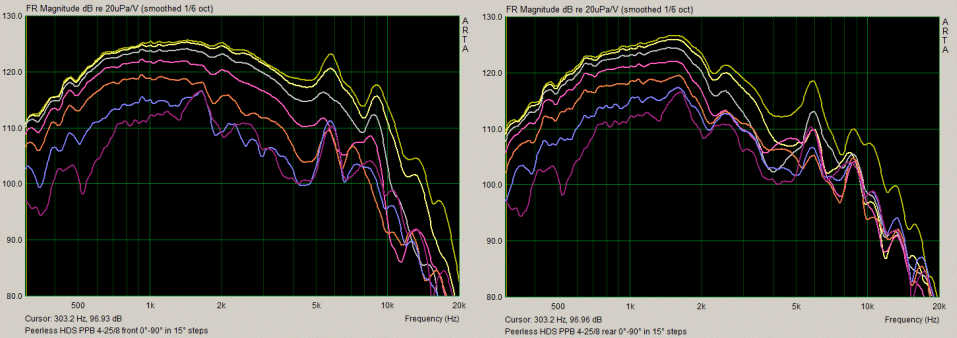
Intended use is from 0.5-2 kHz. While the front radiation pattern would allow another octave, the rear pattern obviously limits the usable range to 2 kHz.
Next the sonograms for front (upper) and back (lower). I have put them one above the other with intend. Look how at some frequencies a dip in one sonogram corresponds with a peak in the other. I don't say that there is a 1:1 relationship, but obviously sometimes the patterns are reaching from front to back and vice versa:
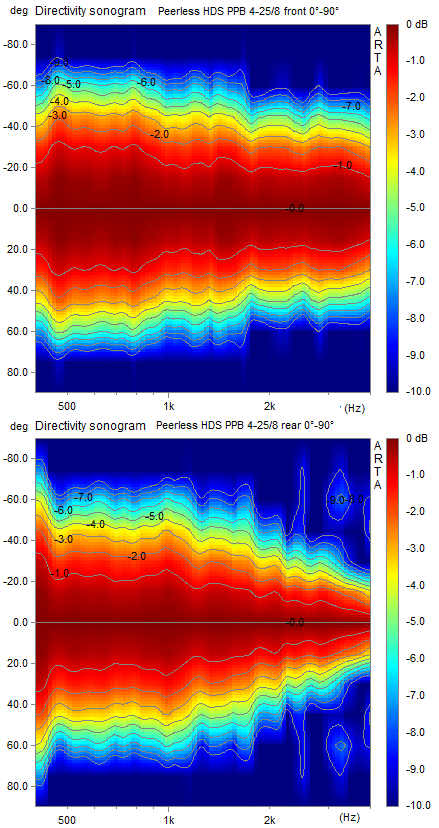
At last the polar diagram of 2 kHz and above:
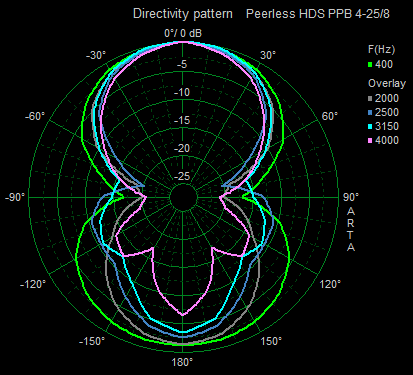
It illustrates nicely how the rear pattern breaks up into lobes, while the front pattern keeps its good look all the time. The green line (400 Hz) is representative of most frequencies below 2 kHz.
I found it quite instructive to see the same data in three different representations - all of them leading to different insights.
I am not trying to take over this thread, but I would like to give an exemplary insight into the polar radiation of a driver and some specifics of it.
It is the 4" Peerless HDS PPB 830870
This is the (already heavily EQed) response of the driver without any baffle in free air (left front, right back):
Intended use is from 0.5-2 kHz. While the front radiation pattern would allow another octave, the rear pattern obviously limits the usable range to 2 kHz.
Next the sonograms for front (upper) and back (lower). I have put them one above the other with intend. Look how at some frequencies a dip in one sonogram corresponds with a peak in the other. I don't say that there is a 1:1 relationship, but obviously sometimes the patterns are reaching from front to back and vice versa:
At last the polar diagram of 2 kHz and above:
It illustrates nicely how the rear pattern breaks up into lobes, while the front pattern keeps its good look all the time. The green line (400 Hz) is representative of most frequencies below 2 kHz.
I found it quite instructive to see the same data in three different representations - all of them leading to different insights.
Attachments
Man, this is measuring (and time consuming), thanks a lot.
An dumb question as always:
not considering the price, could it be of some interest to stuck behind the same driver with the same baffle, magnets almost in contact and wired in phase opp to emulate a dipole (if not so it's a linear quadrupole) just to see if the sonograms get symmetric.
I did it once, the dipole null is wide enough to put the head inside, was nice to listen too.
But you measure so well...
An dumb question as always:
not considering the price, could it be of some interest to stuck behind the same driver with the same baffle, magnets almost in contact and wired in phase opp to emulate a dipole (if not so it's a linear quadrupole) just to see if the sonograms get symmetric.
I did it once, the dipole null is wide enough to put the head inside, was nice to listen too.
But you measure so well...

- Status
- This old topic is closed. If you want to reopen this topic, contact a moderator using the "Report Post" button.
- Home
- Loudspeakers
- Multi-Way
- S17 - Constant directivity dipoles part II
